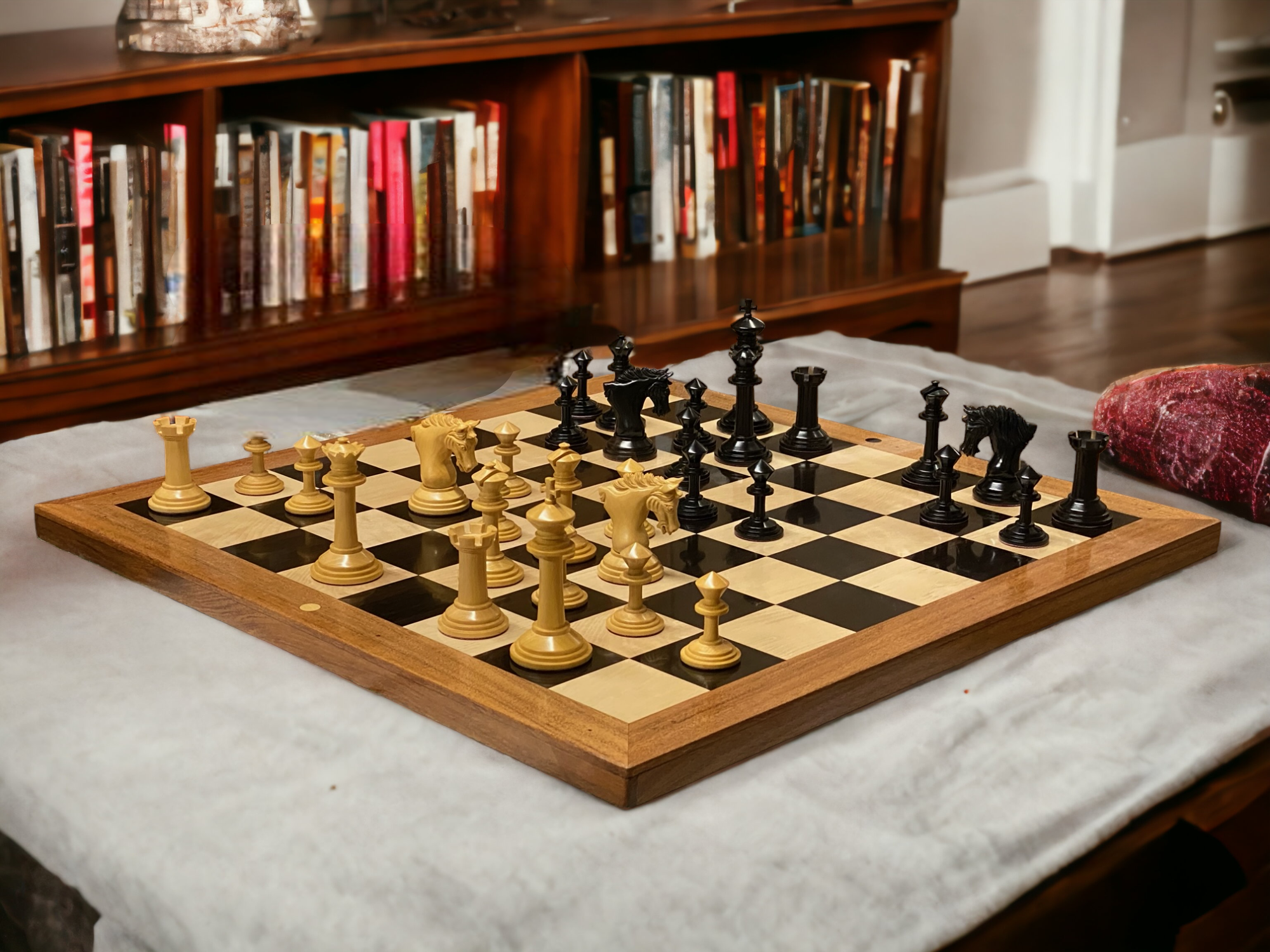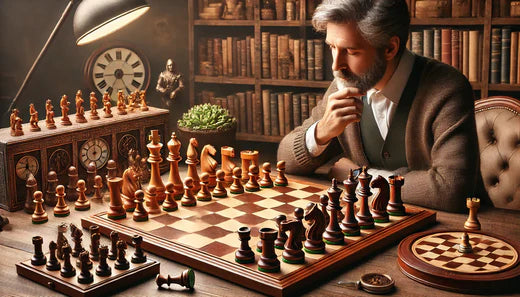Mastering Chess:
Chess, an ancient and beloved game, invites players into a world of strategic thinking and mental prowess. At the core of this captivating game is the chessboard setup—an essential aspect that guides the unfolding of every match. In this extensive guide, we embark on a journey to unravel the intricacies of chessboard setup, exploring the initial placement of each piece, strategic considerations, and valuable tips to enhance your chess-playing experience.
Understanding the Chessboard Setup:
The chessboard, a grid of 64 squares forming an 8x8 matrix, is the backdrop for the captivating interplay of chess pieces. Each square becomes a stage where the strategic dance unfolds, and before the battle begins, appreciating the importance of the initial placement of pieces is paramount, setting the stage for a fair and strategic match.
In the chessboard, the arrangement of pieces holds the key to the game's dynamics. Pawns, the frontline defenders, occupy the initial row, establishing the foundation for both defense and potential strategic advances. Rooks, positioned in the corners, command open files and ranks, influencing the early and late phases of the game. With their unique L-shaped movement, Knights find optimal positions toward the center, offering flexibility and control. Bishops, masters of diagonals, strategically position themselves to cover vital squares and contribute to offense and defense. The queen, a potent force, takes center stage, poised for dynamic maneuvers, while the king, the linchpin of the setup, seeks refuge and strategic positioning beside the queen.
Before the chess pieces make their moves, understanding the significance of their initial positions is akin to deciphering the opening notes of a symphony. The pawn structures, the coordination among pieces, and the careful placement of the king all contribute to the harmonious setup of the chessboard. As players survey the initial arrangement, they lay the groundwork for the unfolding strategic drama, shaping the course of the game from the very first moves.
In essence, the chessboard setup is the canvas upon which players paint their strategic visions. Recognizing the role of each piece in this intricate ballet sets the tone for the battle that is about to unfold, making the initial arrangement a critical aspect of the chess experience.
The Chess Pieces and Their Initial Positions:
Pawns:
Pawns, the foot soldiers of chess, occupy the front row. Beyond their role as defenders, understanding the strategic potential of pawn structures can significantly impact the game. Learning pawn breaks and pawn chains allows players to navigate the opening phase confidently.
Rooks:
Placed in the corners, rooks command the open files and ranks, providing the potential for quick connectivity through castling. Recognizing the importance of rook activity in the endgame reinforces the need for careful placement at the game's outset.
Knights:
Knights, with their distinctive L-shaped movement, find optimal placement toward the center. Utilizing knights to control critical squares and support pawn structures ensures a balanced and flexible position.
Bishops:
The dynamic reach of bishops across diagonals influences both offense and defense. A key consideration is placing bishops on squares that complement their movement, maximizing their impact on the board.
Queen:
The queen, a powerful and versatile piece, is ideally positioned in the center of its color. Recognizing when to deploy the queen for offense or maintain a defensive stance contributes to an effective chessboard setup.
King:
The king, placed beside the queen, is the linchpin of the chessboard setup. Employing castling early secures the king's safety and activates the rooks, fostering a harmonious balance between offense and defense.
Strategic Considerations for Chessboard Setup:
Controlling the Center:
Placing pawns and knights in the center establishes control over crucial squares. A strong central presence facilitates better mobility and strategic maneuvering, influencing the game's direction.
Pawn Structure:
A solid pawn structure is the foundation of a resilient defense. Recognizing potential pawn weaknesses and avoiding structural vulnerabilities is imperative for a robust chessboard setup.
Piece Coordination:
Harmonious coordination among pieces is pivotal for effective gameplay. Connecting rooks, coordinating bishops to cover distinct diagonals, and ensuring all pieces support each other creates a formidable, cohesive position.
Castling:
Timely castling safeguards the king and activates the rooks, contributing to overall board harmony. Choosing the appropriate casting side depends on the game's evolving dynamics and specific strategic goals.
Tips for Improving Chessboard Setup:
Practice Opening Strategies:
Familiarizing yourself with diverse opening strategies enhances your understanding of optimal piece placement. Experimenting with various openings allows players to discover their preferred playing style.
Study Grandmaster Games:
Analyzing games played by grandmasters offers invaluable insights into effective chessboard setups. Observing how top players position their pieces and navigate different game phases contributes to strategic growth.
Focus on Endgame Configurations:
A profound understanding of how the initial chessboard setup evolves into the endgame is critical. Learning endgame techniques enables players to capitalize on setup advantages and navigate endgame complexities.
Develop a Repertoire:
Establishing a repertoire of opening moves aligned with your playing style adds an element of predictability for opponents. Adapting your chessboard setup based on your opponent's moves introduces a strategic layer to your game.
Becoming good at chess starts with figuring out how to set up the chess pieces on the board. It's not just about where they go but creating a kind of art that makes the game interesting. It's like the beginning notes of a music piece or the first strokes of a painting. Understanding where to put each chess piece helps us see the chessboard's patterns and language. It's like finding the game's rhythm, making it more enjoyable and challenging.



